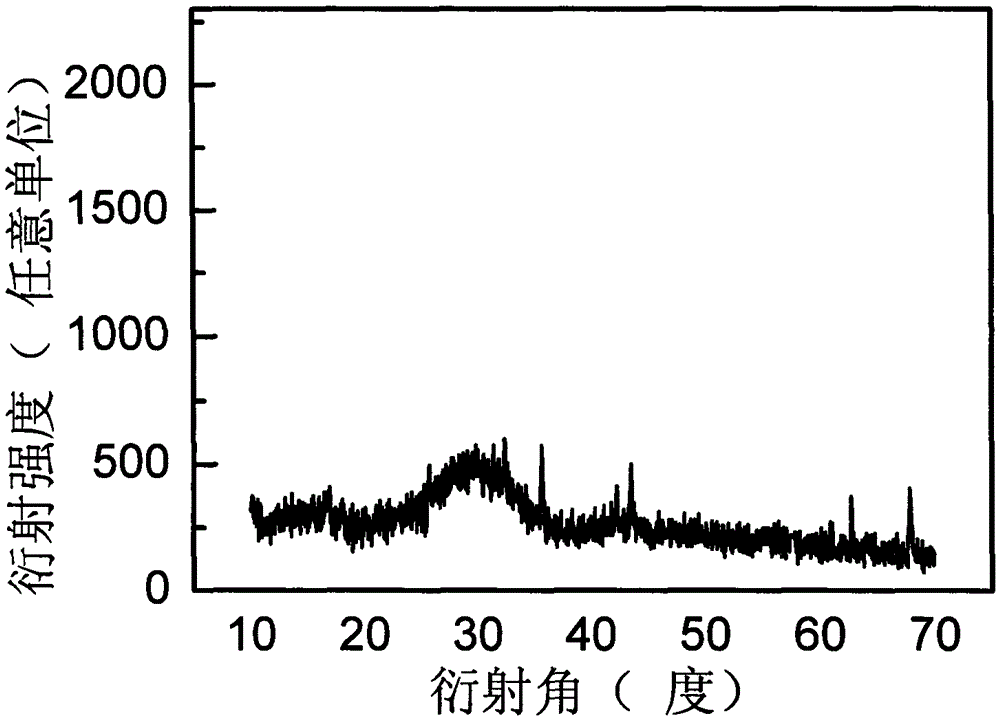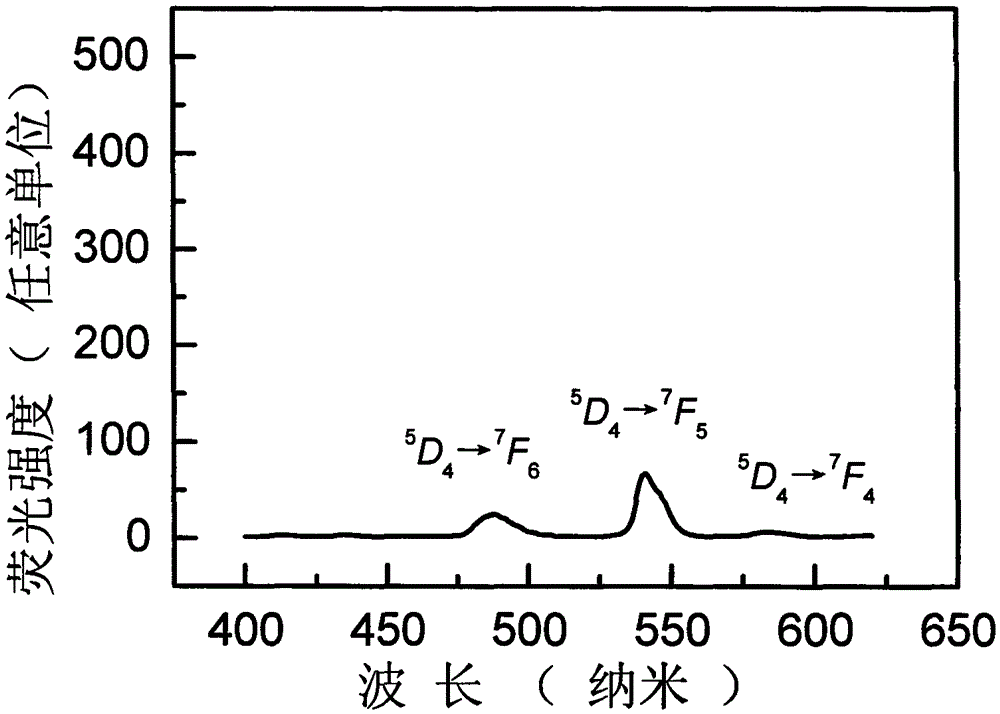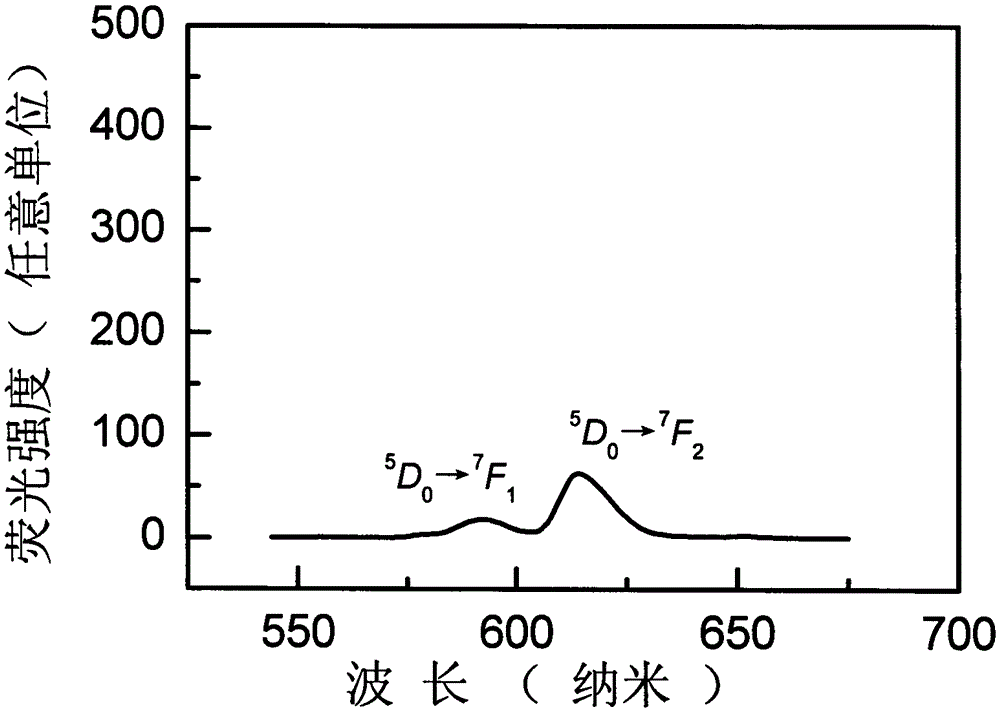Preparation method for glass film containing rare-earth-ion-doped gadolinium chloride microcrystalline
A rare earth ion, glass thin film technology, applied in the field of glass thin film preparation, can solve problems such as device development limitations, and achieve the effects of preventing decomposition and volatilization, superior scintillation performance, and promoting generation
- Summary
- Abstract
- Description
- Claims
- Application Information
AI Technical Summary
Problems solved by technology
Method used
Image
Examples
Embodiment 1
[0034] The preparation method of the glass thin film containing rare earth ion-doped gadolinium chloride microcrystal, comprises the following steps:
[0035](1), the preparation raw materials are composed by mole percent: ethyl orthosilicate: 74.5mol%, butyl titanate: 15mol%, gadolinium chloride: 10mol%, europium chloride: 0.5mol%, and weigh the total amount Be each preparation raw material of 20 grams of analytical purity, stand-by;
[0036] (2), hydrolysis of butyl titanate: dissolve the butyl titanate weighed in step (1) in dehydrated alcohol, the molar ratio of dehydrated alcohol and butyl titanate is 3: 1, add glacial acetic acid quickly , the volume ratio of butyl titanate to glacial acetic acid is 1:1, and strong magnetic stirring is carried out, and distilled water is gradually added dropwise. into solution A;
[0037] (3), the hydrolysis of ethyl orthosilicate: the ethyl orthosilicate weighed in step (1) is dissolved in dehydrated alcohol, and the mol ratio of dehy...
Embodiment 2
[0046] It is basically the same as Example 1, except that in step (1), the raw materials are prepared in molar percentages: ethyl orthosilicate: 70 mol%, butyl titanate: 10 mol%, gadolinium chloride: 15 mol%, europium chloride : 5mol%, take the total amount to be 20 grams of each analytical pure raw material, stand-by; the pulling speed of the glass substrate in the gel solution is controlled at 1 mm / s in the step (7), repeat pulling 5 times, every The interval between pulling and pulling is 15 minutes, and the coated film is dried at room temperature for 4 hours; in step (8), the temperature is raised to 100°C at a rate of 50°C per hour, and the temperature is kept for 1 hour to remove residual water and ethanol , then heat up the stove to 340°C at a rate of 50°C per hour and keep it warm for 20 minutes to remove residual organic matter in the film; in step (9), gradually heat up the stove to 780°C at a rate of 60°C per hour, and Reaction treatment at this temperature for 2 h...
Embodiment 3
[0049] It is basically the same as Example 1, except that in step (1), the raw materials are prepared in molar percentages: ethyl orthosilicate: 72 mol%, butyl titanate: 13 mol%, gadolinium chloride: 13 mol%, europium chloride : 2mol%, taking by weighing total amount is each preparation raw material of analytical purity of 20 grams, stand-by; In step (7), the lifting speed of glass substrate in gel solution is controlled at 0.6 mm / s, repeats pulling 3 time, each pulling interval is 15 minutes, and the coated film is dried at room temperature for 4 hours; in step (8), the temperature is raised to 100°C at a rate of 40°C per hour, and the temperature is kept for 1 hour to remove residual water and ethanol, then heat up the furnace to 340°C at a rate of 40°C per hour, and keep warm for 20 minutes to remove residual organic matter in the film; in step (9), gradually heat up the furnace to 770°C at a rate of 55°C per hour , and reacted at this temperature for 3 hours, and finally o...
PUM
 Login to View More
Login to View More Abstract
Description
Claims
Application Information
 Login to View More
Login to View More - R&D
- Intellectual Property
- Life Sciences
- Materials
- Tech Scout
- Unparalleled Data Quality
- Higher Quality Content
- 60% Fewer Hallucinations
Browse by: Latest US Patents, China's latest patents, Technical Efficacy Thesaurus, Application Domain, Technology Topic, Popular Technical Reports.
© 2025 PatSnap. All rights reserved.Legal|Privacy policy|Modern Slavery Act Transparency Statement|Sitemap|About US| Contact US: help@patsnap.com



